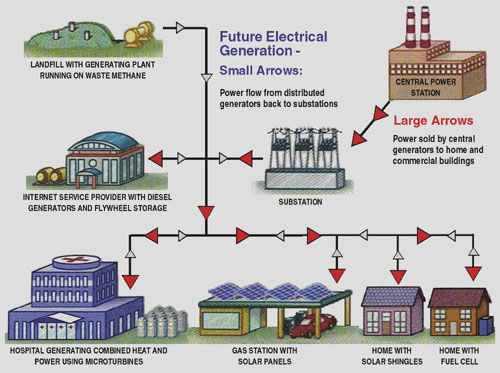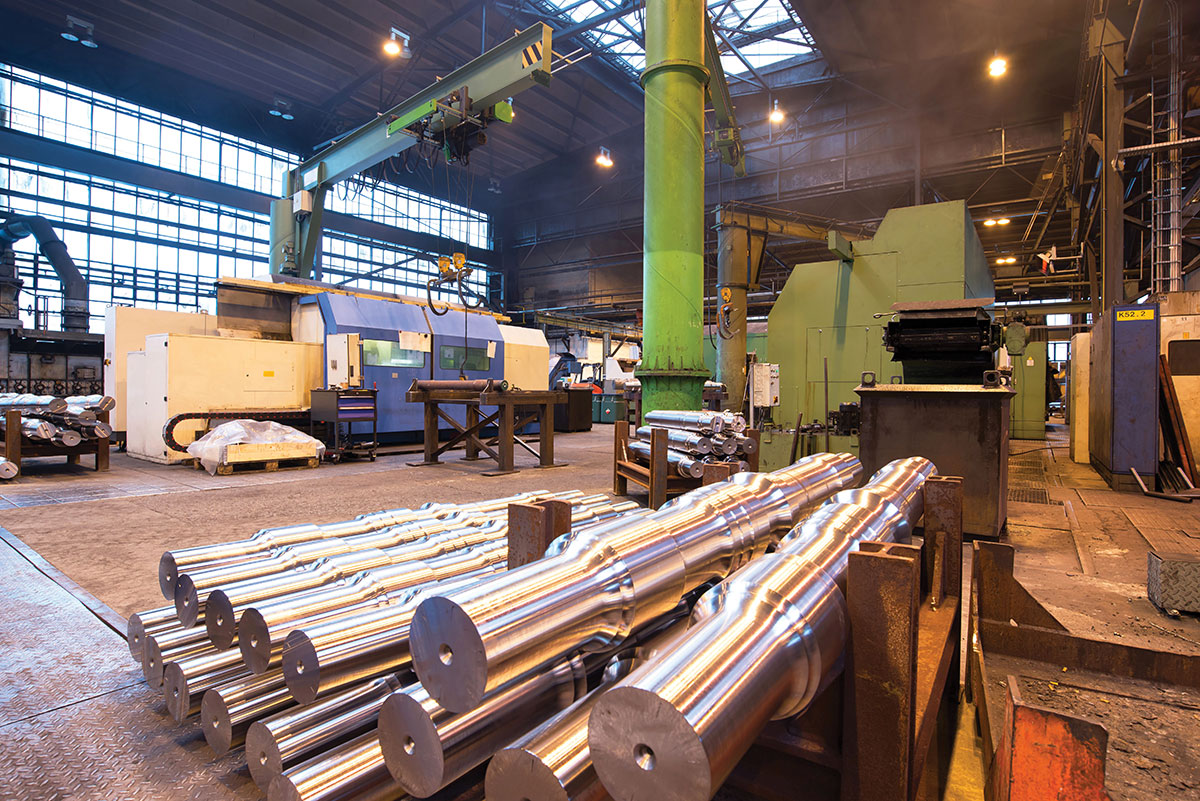There are major issues and obstacles to an orderly transition to using and integrating all distributed power resources with electric power systems (grid or utility grid). The lack of national interconnection standards and tests for interconnection operation and certification, as well as the lack of national building, electrical, and safety codes, are understood and resolving that needs reasonable lead time to develop and promulgate consensus. The Institute of Electrical and Electronic Engineers (IEEE) P1547 interconnection standard should prove to be a benchmark milestone for both the IEEE standards consensus process and as a model for developing further national standards dedicated to the ongoing success of our nation’s electric power system. Based on a fast-track timeline, the P1547 working group voted unanimously to complete a final P1547 draft so it could be ready for submittal to the IEEE Standards Association Standards Board for no later than their December 2001 meeting. The working group met its target of March 2001 for a balloted P1547 draft.
In addition to P1547 status, this paper describes additional interconnection issues and how some of them are being considered through the IEEE activities. And, there are other issues not covered by IEEE activities that are barriers to interconnection, e.g., regulatory, business, and siting issues. The participation of the distributed power community in the IEEE SCC21 P1547 consensus standards activities as described herein appears to be a viable model for what is needed in other areas affecting distributed generation deployment — that model being founded on education, cooperation, and commitment by all interested parties.
Background

Figure 1
The manufacturing and electric power industries, as well as the government have all expressed substantial increase in interest in the use of distributed generation and storage over the past five years. This interest is derived in part due to distributed resources (DR) potential to provide increased reliability and lower cost of power delivery to the customer, particularly with customer-sited generation. And, the advent of competition in the electric power industry and the desire of customer choice are added stimulus for this increased interest. Largely contributing to this trend is the further development of small modular generation technologies, such as fuel cells, photovoltaics, and micro-turbines (see figure 1). Industry estimates that distributed resources will account for up to 30 percent of new generation by 2010. The environmental benefits of distributed power exploiting, for example, renewable resources or combined heat and power are substantial.
Although the application of distributed generation and storage can bring many benefits, the technologies and operational concepts to properly integrate them into the power system must be developed to realize these benefits and avoid negative impacts on system reliability and safety. The power distribution system was not designed to accommodate active generation and storage at the distribution level, specifically to supply energy to other distribution customers. The technical issues to allow this type of operation are significant.
Electricity regulation, zoning and permitting processes, business practices developed under the framework of an industry based on central station generation and ownership of generation facilities by a regulated monopoly, can be barriers to orderly development of market opportunities for distributed power in a restructured electric power industry. These barriers need to be identified through active participation in developing solutions and providing leadership and educational approaches to reducing these infrastructural barriers to full deployment of distributed power resources.
The system integration issues related to distributed power are national issues that cut across a number of industries. There is a federal and industry leadership role to bring together these various parties — manufacturers (e.g., electrical/electronics components and systems, photovoltaics, wind energy systems, fuel cells, gas turbines, batteries, etc.), utilities, energy service companies, codes and standards organizations, state regulators and legislators, and others — to address the technical, institutional and regulatory barriers to distributed power. In fact, these very groups have asked for assistance and expressed commitments to work together. For example, in June 1999 there was a Senate Energy and Natural Resources Committee hearing that included interconnection issues where the IEEE USA and CEOs of manufacturing corporations provided testimony on interconnection of distributed resources. As expressed there, and now being heard in more and more forums on electric power, there is a growing sense that a national approach is essential to a viable market for distributed power. Unique to this national need is the need for partnership including industry and government to accomplish specific goal oriented objectives. One of those objectives is to move ahead on a fast track and at the national level, in developing a national interconnection consensus standard.
The IEEE being a transnational technical professional society with a membership of more than 320,000 individual electrical, electronics, and computer engineers in 147 countries (219,000 of these IEEE members live in the United States), oversees the IEEE standards activities through its IEEE-SA (Standards Association). The IEEE standards area has the responsibility for pursuing programs on an IEEE-wide basis that enhance globalization of IEEE standards for promoting the development of electrotechnology and allied sciences and application of those technologies. IEEE standards provide a common ground for communication in some specific area of electrotechnology. They also provide criteria for measuring the acceptable performance of equipment or materials pertinent to the field of electrotechnology. Further, IEEE is a world leader in the development and dissemination of voluntary, consensus-based standards involving today’s leading edge electro-technologies. The approval and publication of an IEEE standard implies that the document represents a consensus of the parties who have participated in its development and review. Since every attempt is made to involve all interests in the activity, it can be presumed that the document represents a consensus of interests concerned with the scope of the standard. Consensus is established when in the judgment of IEEE-SA Standards Board, substantial agreement has been reached by directly and materially affected interest categories. Substantial agreement means much more than a simple majority, but not necessarily unanimity. Consensus requires that all views and objections be considered, and that a concerted effort be made toward their resolution.
INTRODUCTION TO P1547
On June 25, 1998, the IEEE Standards Board, encouraged by the IEEE membership, decided that a standards effort needed to be seriously launched to address the needs of its members regarding distributed power resources and electric power systems on a national level. With that in mind came the expansion of the responsibilities of IEEE Standards Coordinating Committee 21 (SCC21) that reports directly to the IEEE Standards Board and oversees all standards development activities for distributed power resources. The scope of SCC21 now includes all distributed generation and energy storage. The official new title is IEEE SCC21 on Fuel Cells, Photovoltaics, Dispersed Generation, and Energy Storage. Its new approved scope and committee responsibilities include overseeing the development of standards in the areas of Fuel Cells, Photovoltaics, Dispersed Generation, and Energy Storage, and to coordinate in those fields among the various IEEE Societies and other affected organizations to ensure that all such IEEE standards are consistent and properly reflect the views of all applicable disciplines. In addition, the SCC21 reviews all proposed IEEE standards in those fields before their submission to the IEEE-SA Standards Board for approval and coordinates submission to other organizations.
The first organizational meeting of the expanded SCC21 was held in December 1998, and was hosted by the U.S. DOE in Washington, DC. At that meeting participants proposed an interconnection standard project. The interest was overwhelming to proceed and that the document should indeed be an IEEE “Standard” as opposed to a “Recommended Practice” or a “Guide.”1 In January 1999 the IEEE project authorization request (PAR) was submitted by SCC21 chair, Mr. R. DeBlasio, to IEEE Standards Board for approval that came in March 1999. The new standards project was designated IEEE P1547 as follows:
- P1547 Title. IEEE Standard for Interconnecting Distributed Resources With Electric Power Systems.
- P1547 Scope. This standard establishes criteria and requirements for interconnection of distributed resources (DR) with electric power systems (EPS).
- P1547 Purpose. This document provides a uniform standard for interconnection of distributed resources with electric power systems. It provides requirements relevant to the performance, operation, testing, safety considerations, and maintenance of the interconnection.
- P1547 Sponsor. IEEE SCC21, R. DeBlasio
- P1547 Working Group. P1547WG is entitled IEEE SCC21 P1547 Distributed Resources and Electric Power Systems Interconnection Working Group.
- P1547 WG Officials: Chair Richard DeBlasio, Vice Chairs Frank Goodman and Joseph Koepfinger, snd Secretary Thomas Basso.
At the international level, the IEEE consensus standards development P1547 activities have been recognized for their importance by international standards groups headquartered in Geneva, Switzerland, headed by the International Electrotechnical Commission. Last year, developments in linking the U.S.A. distributed power standards development activities with global standards activities, were stimulated by the work of IEEE SCC21, and that influenced the establishment of an International Electrotech-nical Commission (IEC) Joint Coordination Group for Decentralized Renewable Energy Systems (JCG DRES) in Paris, France, on March 3, 2000. With decentralized rural electrification projects being implemented in developing countries, there is a need for standards to be developed and used as a reference for assessing the quality of the operation of the systems. The JCG is being chaired by R. DeBlasio, Chair of IEEE SCC21 and Chair of IEC TC82 (PV Solar Energy Systems). The JCG includes coordination with Technical Committee 88 (TC88 — Wind Turbine Systems) and TC21 (Secondary Cells and Batteries), and, other IEC technical committees are being invited to join from over 40 member countries. The U.S. will lead this effort as convener and chairman, and with France as the project leader. This is a major link to the world standards development community for the IEEE SCC21 standards development work and will play a major leadership role in facilitating international understanding, harmonizing of requirements, and for negotiating reciprocity of testing requirements and equipment/system certification. The first official meeting of the JCG DRES was held in Golden, Colorado, U.S.A., in January 2001 with a second meeting held in Paris, France, in July 2001. These meetings have become the beginning of an international distributed power activity with far-reaching influences on technology deployment and application, testing, and certification for use by world bodies such as the world bank for investing in energy projects.
STATUS OF P1547 DEVELOPMENT
Since initiation of P1547, the working group has grown to over 350 members, typically with 80 to 100 attendees participating in meetings every other month. An IEEE SCC21 P1547 web site (http://grouper.ieee.org/groups/scc21/1547/) was established that has both a public area and a password protected WG area, and, an IEEE list server for assisting in developing the interconnection standard. The support for this IEEE activity, both from the members and the electric power community at large, has been overwhelming on a national level.
The P1547 project had been unanimously voted by P1547 meeting members to proceed on a fast track, to meet every other month, to complete a draft for ballot and approval in 2001. Experience has shown over the years that a two-year development cycle versus the normal four to seven-year cycle was aggressive but possible.
The P1547 standard remains on schedule that it could be published in year 2001. In March 2001, P1547/Draft07 was balloted by the P1547 ballot group numbering 167 members authorized to vote under IEEE rules. Following the 30-day voting period, ballot returns resulted in a 91 percent return of ballots, achieving the 75 percent return requirement. This was encouraging, showing the participants determination and support for completing a technical standard to remove technical barriers for interconnection. However, the IEEE requirement for 75 percent affirmation was not met, having received only 66 percent affirmative votes. According to the IEEE balloting practices, ballot members who elected to submit a negative ballot were requested to provide reasons for the negative and to provide recommended rewording that would satisfy them to change their negative ballot to affirmative. The P1547 consensus ballot group member classification categories were general interest, producer, user, and other (government/academic/consultant). The IEEE balloting practices require that no classification is permitted to constitute 50 percent or more of the balloting group membership. The P1547 eligible voters interest category balance was 29 percent general interest, 33 percent producer, 36.5 percent user, and 1.5 percent other.
In April 2001, a P1547 meeting was held to initially address the ballot results. The meeting was attended by 88 members of the P1547 working and ballot groups who provided guidance and technical inputs on the ballot comments received. The attendees were requested by Chair R. DeBlasio to provide recommended further actions for the P1547 writing group to address the comments and make changes, for subsequent re-circulation of a reworded Draft07 for consensus approval based on the changes made.
After the April 2001 meeting, there were two meetings of the P1547 writing group and various phone conversations and email exchanges to develop proposed rewording to address the ballot comments. The writing group completed their proposed rewording in mid-August. Subsequent to that, in late August and early September, the P1547 sponsor or his delegates planned to confer with the ballot members who provided negative ballot comments. The target schedule was to have the final reworded P1547 Draft07 recirculated to the ballot group in September. Then, a ballot group member would have the option of changing their vote solely based on the rewording. If that recirculation were to result in over 75 percent affirmative ballots, then the year 2001 publication of P1547 could be achievable.
Prospective New IEEE Projects
Prospective new IEEE interconnection standards project development activities were discussed at the January 2001 P1547 development meeting in Washington, D.C. The proposed topics follow: (1) Standard for Testing Interconnection Systems for Distributed Resources; (2) Application Guide for Distributed Resources; (3) Recommended Practice for Monitoring and Control of Distributed Resources; (4) Distributed Generators and Equipment — Specifications and Performance (includes Modeling); (5) Network Specifications and Applications with Distributed Resources; and (6) Certification of Distributed Resources and Interconnection Equipment. There was further discussion at the April 2001 P1547 meeting with recommendation to proceed with new interconnection projects. In May 2001, for item (1) above, a PAR was written and in June 2001 it was approved by IEEE NESCOM (New Standards Committee) and IEEE Standards Board, designated P1589, entitled, “Standard for Conformance Test Procedures for Equipment Interconnecting Distributed Resources with Electric Power Systems.” The other prospective activities are being further discussed. (For updates see IEEE SCC21 P1547 web site.)
Additional Interconnecting Issues
Distributed generation has much promise to improve distribution system performance, however, there are a host of issues to be addressed. A significant issue is that distribution system designs are normally based on radial power flows and this causes some technical difficulties in the successful implementation of distributed power. Further, there are additional major issues and obstacles to an orderly transition to the use and integration of all distributed power sources with electric power systems now and in the future. These include the unknown impacts of large market penetration; the lack of national interconnection standards and tests for interconnection operation and certification as well as the lack of national building, electrical, and safety codes being understood and needing reasonable lead-time to develop and promulgate consensus; and the deficiency that present power distribution system technology and operation does not allow for full realization of the benefits of distributed power.
Many state governments are moving forward to develop interconnection standard agreement protocols and have attempted to include technical requirements, but system size limitation typically becomes an issue and the decisions usually revert back to doing on-site specific studies, where the cost then in some cases, becomes more than the distributed generator or project itself. All of these efforts toward moving forward are commendable but the technical requirements and testing procedures are being referred back to the IEEE SCC21 to resolve and produce the national standard(s). The members of IEEE SCC21 are committed to this task and are determined to fulfill the objective of a national standard(s). However, lack of advanced interconnection technology hardware, software, tests, system operational models of current and future electric power systems, and, time dependent unified consensus building need to be taken into consideration. With that in mind, the IEEE SCC21 standards activities need to be perceived as developing living document(s) that will be advanced in time and in stages.
Development and validation of industry developed products such as distributed and electric power system architecture design criteria, characterization and certification tests, educational and training tools, technical standards, models, etc., will need a central interface technologies characterization test and evaluation capability. This will be critical in the near term, since validation will be necessary to establish the technical basis for requirements such as those stated in the IEEE SCC21 P1547 standards development work and other standards to be developed. Therefore, a major focus on pursuing the establishment of a testing infrastructure within the industry is essential to success. The establishment (beyond the characterization test facility for research and validation of interconnection device performance) of a commercial certification body, testing laboratories, and the standards and procedures to be used will be in time, when established, an example of ancillary services anticipated with the new electric power system of the future.
Concluding Remarks
The key to a complete interconnection infrastructure including a body of standards will require: adopting uniform technical standards for interconnecting distributed power resources with the electric power system of today and for the future; developing and adopting testing and certification procedures for interconnection hardware and software; and accelerating development of distributed power control and communication technology, equipment, and systems.
Measures of success for distributed power will be based on initiating and conducting R&D on the key interface, interconnection, communications and control technologies, including both hardware and software, for fully distributed power system architectures. To quicken the realization of this success, we view that consensus approaches tempered with reasoned solutions are required to remove barriers to distributed power near term markets by accelerating the development, adoption, and implementation of regulatory utility policies, technical standards, local codes and permitting processes that will allow distributed power to compete fairly in the market without compromising consumer protection, environmental values, health, and safety.
This paper has described some interconnection issues being considered and how the distributed power community is addressing some of them through the IEEE SCC21 activities. There are other issues not covered by IEEE activities, including: regulatory, business, siting, etc., that are barriers to interconnection. The participation of the distributed power community in the IEEE SCC21 P1547 consensus standards activities as described herein appears to be a viable model for what is needed in other areas affecting distributed generation deployment — that model being founded on education, cooperation, and commitment by all interested parties.
In closing, it is interesting to note that Edison’s first power facility, the New York City Pearl Street Station, would qualify as a distributed generator today. We evolved from this first venture into major power plants that are radial with electromechanical controlled grids that are interconnected. Distributed power today is transforming that into an electronically controlled open-access system. Improved and advanced interconnection is the key to that transformation. And, the IEEE P1547 interconnection standard should prove to be a benchmark milestone for both the IEEE standards consensus process and as a model for development of further national efforts dedicated to the ongoing success of our nation’s electric power system.
1 According to IEEE a “Standard” is a document with mandatory requirements. Mandatory requirements are generally characterized by the use of the verb “shall” whereas Recommended Practices normally use the word “should,” and Guides are documents in which alternative approaches to good practice are suggested but no clear cut recommendations are made.
The members of the IEEE P1547 working group and ballot group are gratefully acknowledged for their dedication and contributions in volunteering their expertise and time to the success of IEEE standards development.










Find Us on Socials